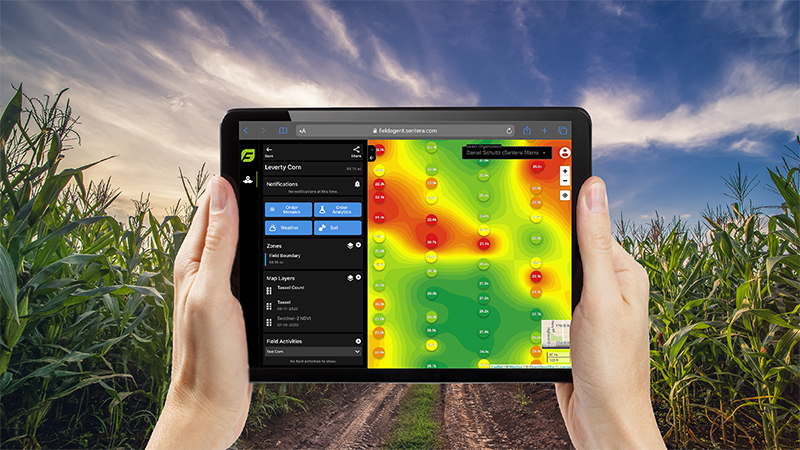Deere, Case And Other Equipment Companies Join Forces On Planter Design Standard
As many of you already know, generally speaking there isn’t a whole lot of reaching across the aisle going on in the world of Big Ag Equipment.
For lack of a better analogy, the giants like John Deere, Case IH and AGCO seem to operate on a similar philosophy as longtime Big Ten conference rivals The Ohio State University and Michigan, both of whom refuse to refer to the other as anything other than “That School Up North” and “Ohio.”
So imagine my surprise having learned that equipment mega-rivals Case-IH and Deere have joined forces (along with other equipment manufacturers, crop protection industry reps and both domestic and international regulatory officials) in an effort to establish voluntary planter design standards that are more protective of pollinators.
This initiative – backed by research from the Julius Kuhn Institute, which describes itself as “a federal research center for cultivated plants” in Germany – arose after a particularly nasty bee kill in Germany back in 2008 which many have blamed on a “sloppy” application of a seed treatment insecticide from the neonicotinoid class onto corn seed that dusted off in a vacuum/negative pressure planter.
“This was not what you’d call a typical incident, however, as there was basically a perfect storm of conditions for this bee kill to occur,” recalls Karl W. Klotzbach, product safety & compliance engineer, CNH Industrial America. “The application rate used was about 62 grams of active ingredient per 1,000 seeds, or about double what we typically put on in the U.S. Also, there was no seed coating or binder used, and it was a fairly unusual planting in that it was late in the season and bees were actively foraging in close proximity to the field.
“Now, as equipment manufacturers we certainly acknowledge that a planter played a contributory role in this incident, but the equipment was only part of the equation,” he concludes.
Following this incident, European regulators immediately made it mandatory that all planters used to plant neonicotinoid treated-seeds have a deflector installed. Environmental groups in North America at that time – having gotten wind of the incident – lobbied U.S. EPA to consider a label addition to recommend downward exhausting planters to plant neonicotinoid treated-seeds, as early indications showed the planter’s exhaust height and velocity in the German incident had contributed to spreading the fugitive seed treatment dust.
“The original solution from Germany wasn’t necessarily going to work for most planter manufacturers because when you put a deflector at the end of an exhaust you get back pressure,” says Klotzbach. “And then you get are subject to reduced seed delivery performance. Also our equipment is typically larger than our counterparts across the pond, so that has to be taken into consideration as well.”
“That’s when the equipment industry started our own proactive dialogue to get this right with a performance-based solution that considers the entire seeding system and which allows flexibility in design,” adds Kevin W. Hoehn, safety and standards compliance engineer, John Deere Crop Care Seeding and Tillage.
Enter ISO 17962. ISO 17962, written collectively across the industry and registered with the International Organization for Standardization (ISO) in Geneva, Switzerland, is a voluntary recommendation for all vacuum-powered planters which begins: “This International Standard has been developed to consider potential methods of minimizing the effects of seed coating dust drift when mixed in the exhaust fan air flow. This dust has the potential to become fugitive during the sowing process on equipment with pneumatic systems.”
What the standard does, according to Klotzbach, is “not reducing the material that could conceivably come off the seed during planting, but rather we want to control where the dust has the potential to go.”
The researchers explored two design verification methods – one based off field testing and the other in a lab environment.
“What we were looking for in those lab tests was measuring the height at which air is exhausted from the planter, as well as the velocity at which it is exhausted. Controlling height and air velocity will have a direct effect on minimizing potential fugitive seed treatment drift,” explains Klotzbach. “However, air volume, exhaust diameter and air velocity are inter-related, making a simple measurement of velocity directly at the exhaust an incomplete specification. A better method was to measure at the edges of “defined cylinder” enveloping the exhaust point.
“Therefore you have a limited zone by which you can affect the environment,” Klotzbach continues. “So we put together a draft for alternative field and lab based verification methods and that went out globally to be vetted by international planting experts and it came back that, yes, this looks workable.”
And that’s basically the story of how ISO 17962 came to be, although unlike a law, nobody is going to be coerced into adopting the working group’s recommendations.
“In the US system such a standard is voluntary in nature – nobody is forced to do this or that –but it incorporates the combined advice of industry experts,” adds Hoehn. “Manufacturers still design their equipment and then validate the results with their own lab/field work. Basically we are saying “these are good design principles for pollinator protection.”






